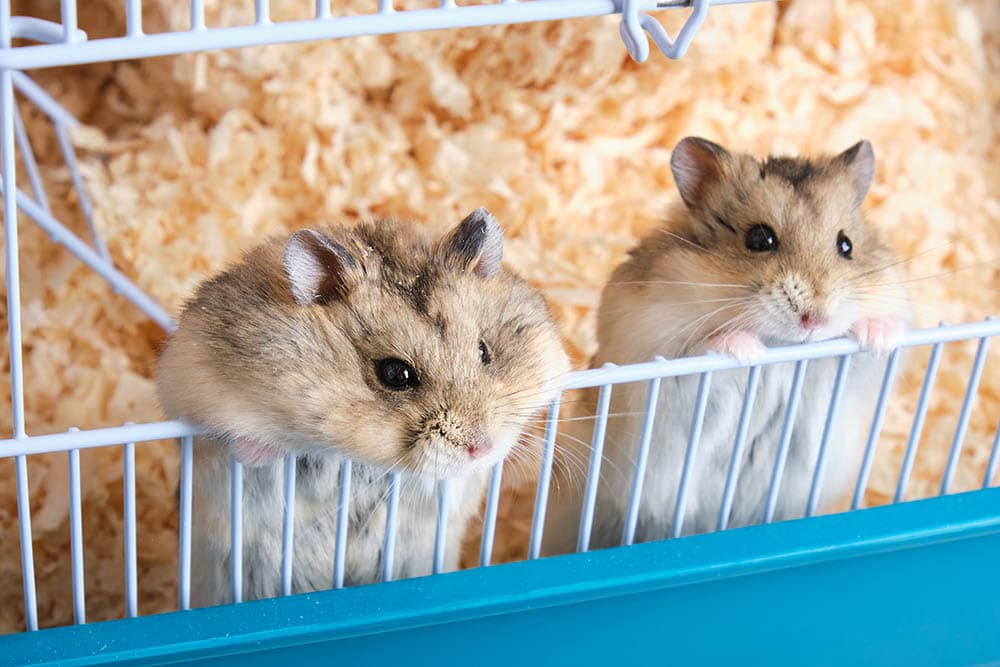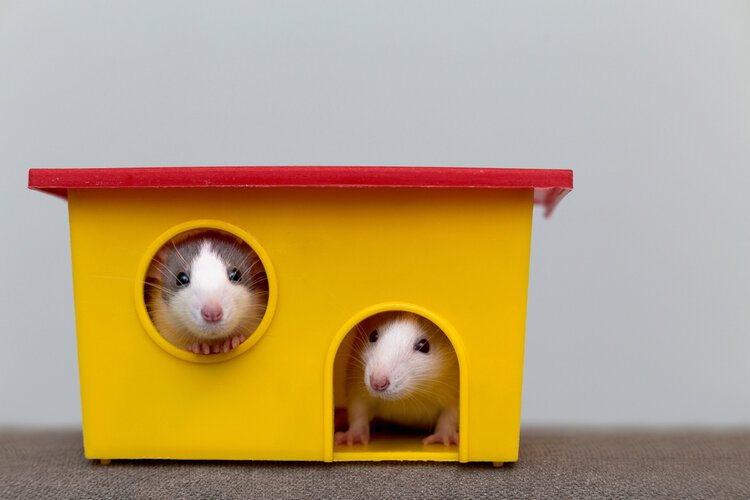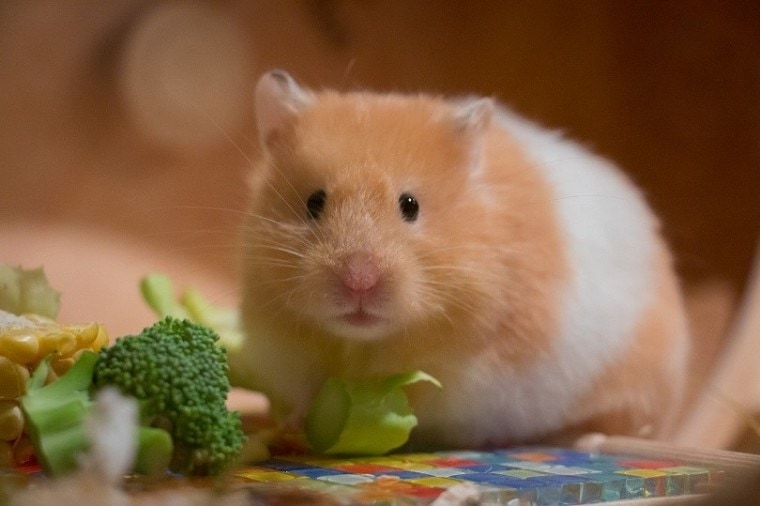
Hamsters are those tiny, lovable animals that many people have owned at least once. They’re cute and full of sass and sweetness, making them great pets. There are lots of interesting things about hamsters that you’ve probably never heard, so let’s get into the fun and fascinating hamster facts you didn’t know before now.
 The 50 Hamster Facts
The 50 Hamster Facts
1. Hamsters are mammals.
Hamsters belong to the family Cricetidae, which is the second-largest family of mammals in the world. There are over 600 species in the family, including mice, lemmings, and voles.
2. They were discovered in the 1700s.
They were discovered in the 1700s, first catalogued by scientists in 1839, but it wasn’t until the 1930s that hamsters began being used as lab animals. Shortly after that, they became popular pets.
3. They are all descendants of two hamsters.
It’s believed that all domesticated Syrian hamsters are descendants of two hamsters that were bred in 1930.
4. There are multiple hamster species.
There are around 25 species of hamsters, including Roborovski, White Winter Dwarf, and Syrian.
5. Syrian hamsters are the most popular.
Syrian hamsters are the most popular species of hamster kept as pets. They are also sometimes referred to as “teddy bear hamsters”.
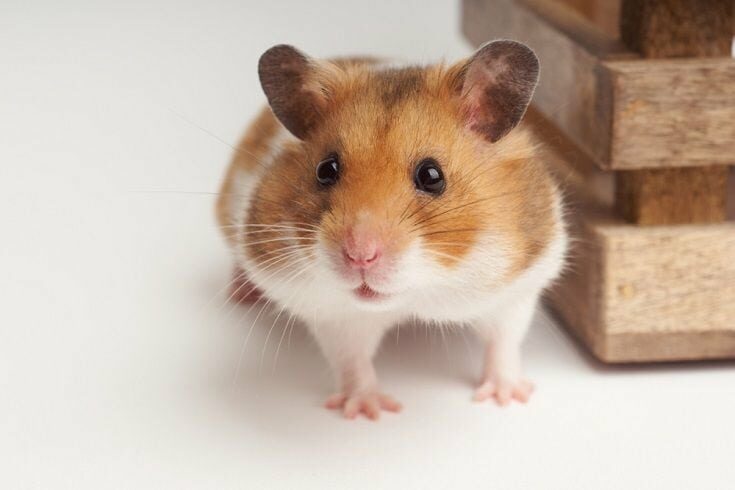
6. Wild hamsters are endangered.
In their native habitat, Syrian hamsters are considered endangered.
7. Long-haired hamsters are a type of Syrian hamster.
Their long hair means they require routine grooming to prevent mats and waste collection around the back end.
8. Their tails are how you can distinguish them from other small mammals.
Hamsters have short tails, differentiating them from the similar-looking Gerbil, which has a long, mouse-like tail.
9. Some hamsters can jump and climb better than others.
Chinese dwarf hamsters have longer tails than other species of hamsters, making them more agile at jumping and climbing, and meaning they are often confused for mice.
10. Hamster breeds vary in heights…
Some dwarf hamsters only reach 2 inches when full grown, while the larger Syrian hamster tops out at around 6 inches.
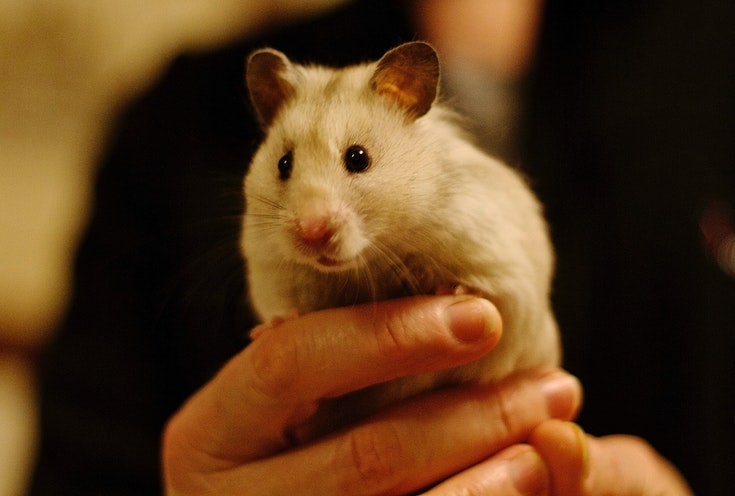
11. …And in length.
European hamsters can exceed 12 inches when full grown.
12. Some hamsters are rare to keep as pets.
It is extremely rare for European hamsters to be kept as pets. It became even more rare when they were added to the IUCN list of critically endangered animals. They could be extinct by 2050.
13. Hamsters are Omnivores
They are omnivores, primarily eating plants and grains, but hamsters will also eat animal proteins, like insects and eggs.
14. They are active during dusk and dawn.
They are naturally crepuscular, which means they are most active during dawn and dusk and sleeping through much of the day and night.
15. Hamsters love to run.
Hamsters are fast runners, able to clock in over 5 miles of running in a single night.
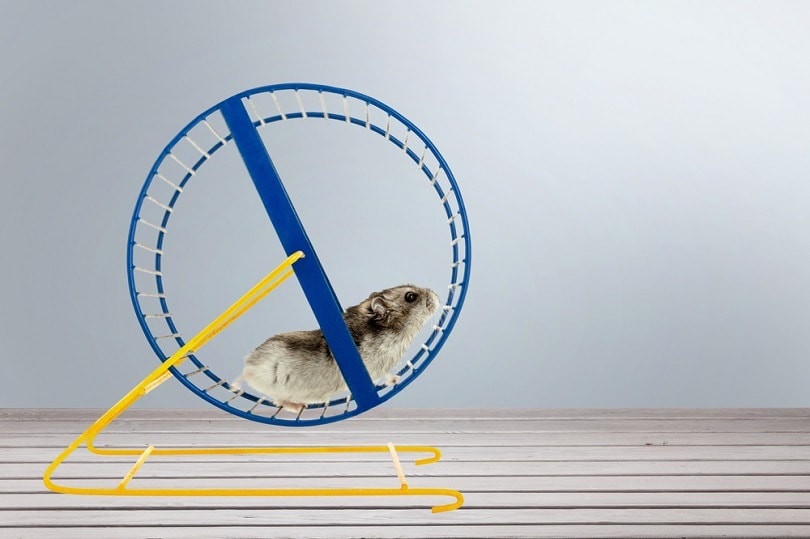
16. They have sensitive noses.
They use scent glands to mark their space and to help find their way. Some of these scent glands are located on their back.
17. They can be bred easily.
They breed easily in captivity, which is part of the reason they are popular as pets and lab animals.
18. Hamsters can live longer than other small mammals.
In captivity, hamsters can live 3–4 years with excellent care.
19. They can’t see very well.
Hamsters have very poor eyesight and can’t see some colors (such as red), so they rely on their noses to find their way. They have a great sense of smell, though!
20. Hamsters are born blind.
They are born completely blind and develop their eyesight as they age.
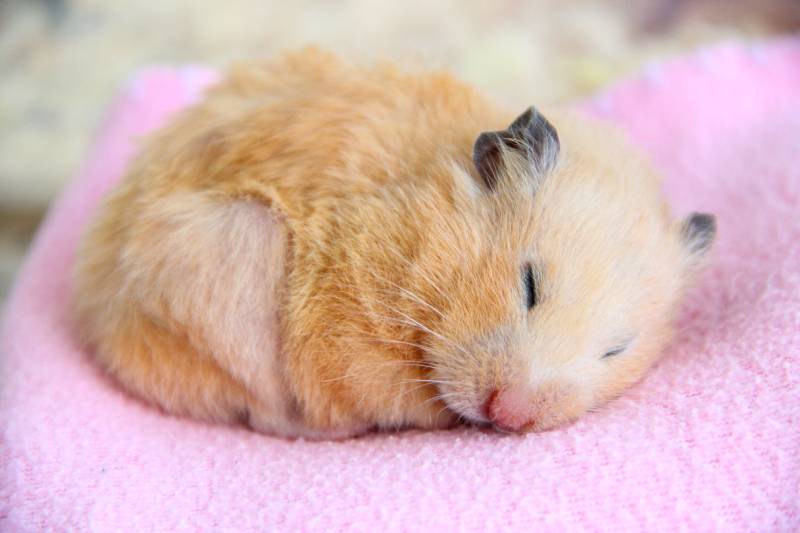
21. They are also born with teeth.
They are born with a full set of teeth.
22. Hamsters enjoy digging.
In the wild, hamsters dig large, elaborate burrows. These burrows can reach around 0.5 meters in depth and often include multiple “rooms” and offshoots.
23. Wild hamsters hibernate.
In the wild, hamsters will hibernate during the colder months.
24. The word “hamster” is derived from several languages
The word “hamster” is believed to be of Baltic, Russian, or Slavonic in origin. In German, the verb “hamstern” is derived from “hamster” and means hoarding.
25. Hamster cheek pouches have a name.
They’re called diplostomes and can stretch to allow a hamster’s cheeks to be 2–3 times the size of its head.
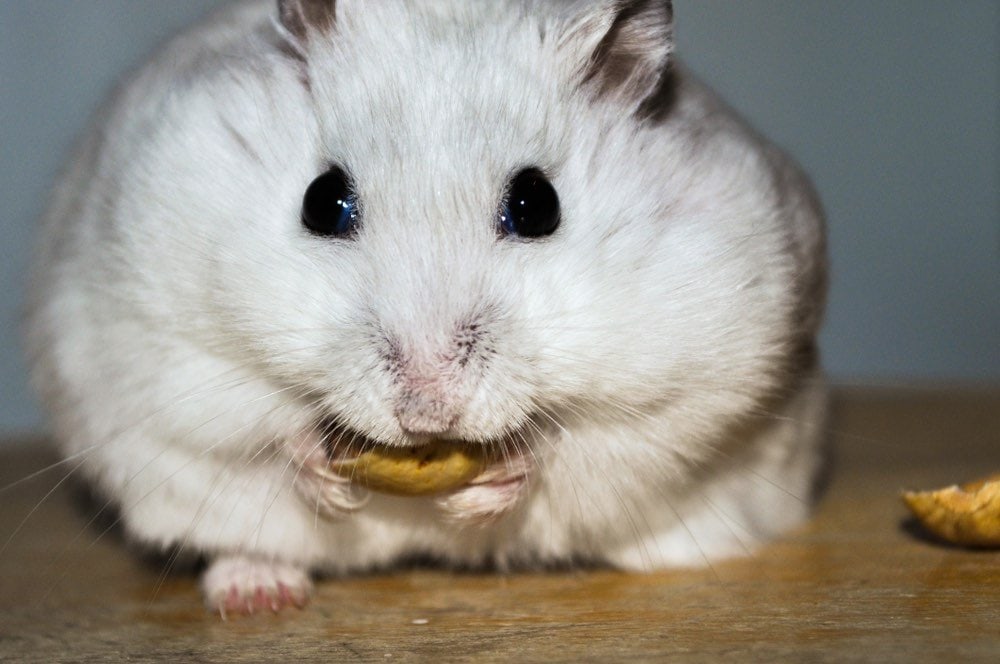
26. These pouches have multiple uses.
Diplostomes aren’t just for food. Mother hamsters can carry their young in their diplostomes in case of danger. Some hamsters inflate them with air before swimming across a body of water, using them as a makeshift floatation device.
27. Hamsters can bite.
Although they are popular pets, hamsters do startle quite easily and may bite if startled. It’s recommended to talk to your hamster and approach it slowly to avoid startling it.
28. They also make noises.
If startled, you may hear your hamster squeal or scream.
29. Hamsters are intelligent.
Hamsters are intelligent animals that are even capable of learning their name. Talking to your hamster builds trust and teaches your hamster to form associations between words and items or actions.
30. Hamsters can solve puzzles.
While rats tend to get all the credit, hamsters are capable of working mazes and puzzles.
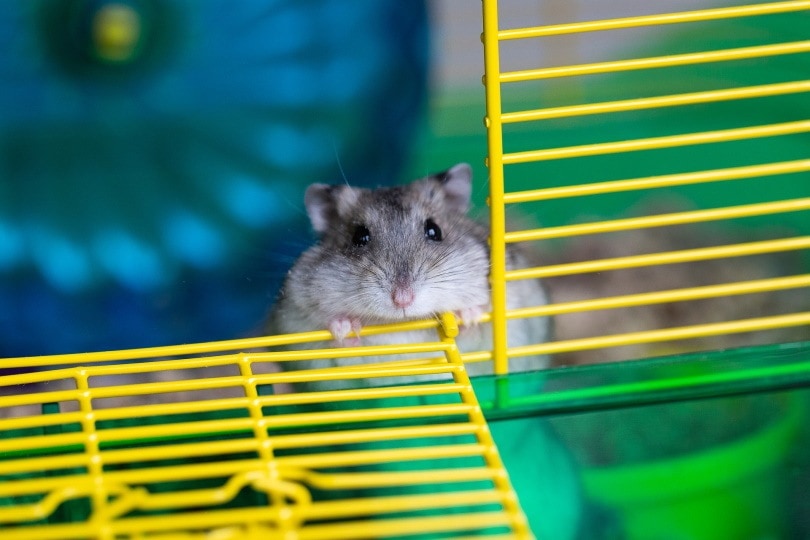
31. Hamsters have a range of emotions.
Studies have shown that hamsters have different moods that directly correlate to their health and enjoyment of their environment.
32. Their teeth never stop growing.
Their teeth never stop growing, so they should always have chew sticks and toys available to help keep the teeth trimmed. If the teeth overgrow, they can be trimmed by a veterinarian.
33. Their teeth can grow in unusual directions.
The teeth can break and may grow in unusual directions, especially if the tooth next to it is broken.
34. Hamsters can be trained.
Hamsters are a great pet if you’re looking for a small animal that can be litter box trained. They are very clean and prefer not to potty all over their enclosure.
35. Hamsters can run backward.
Which many mammals are not capable of doing.
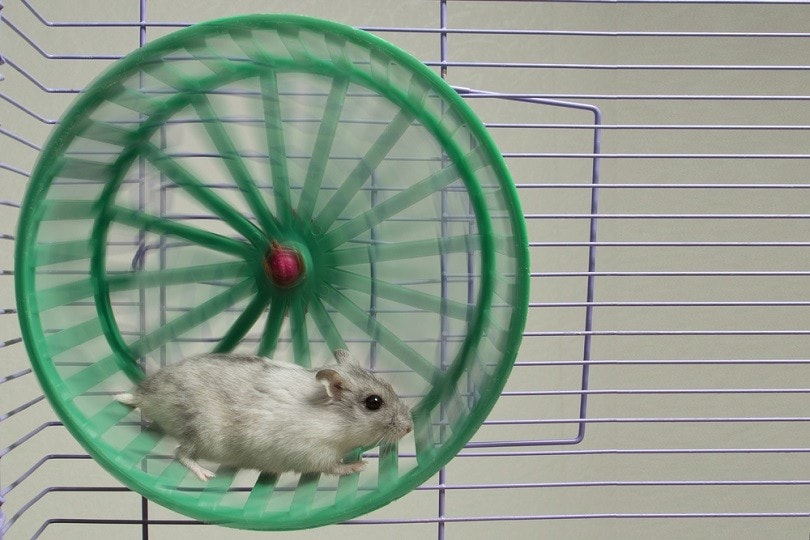
36. They use both sets of feet.
They can use both their front and back feet to grip, typically using them to hold onto toys or food.
37. They love to bathe
Some hamsters like to take dust baths, much like chinchillas.
38. Hamsters generally do not overeat.
Unlike most rodents, hamsters are not prone to overeating. They will often hoard food in their enclosure that they aren’t hungry for or don’t like.
39. Hamsters need vet care.
Your hamster should have regular visits to the vet. A bi-annual veterinary visit can ensure your hamster is healthy, especially as it begins to age.
40. Hamsters prefer to be alone.
Syrian hamsters are solitary animals in the wild, so they should not be kept with cage mates in captivity.

41. Some hamsters will fight their cage mates.
Syrian hamsters must be separated from their littermates by the time they are 4–5 weeks old to prevent fighting and injuries.
42. Other hamsters love having a friend.
Some dwarf varieties of hamsters are highly social animals that appreciate living with a cage mate.
43. The female hamsters are big.
Female hamsters are usually larger than males.
44. Baby hamsters have a name.
Baby hamsters are called “pups”.
45. Litters can range in size.
A litter of hamsters usually consists of 6–12 pups, although some litters can exceed 20 pups.

46. You should never touch a baby hamster.
Handling pups for the first few weeks after birth is not recommended. If you touch the pups before they are furred and wandering the enclosure on their own, their mother will most likely kill and eat them.
47. Mother hamsters nurse their young.
To keep her healthy and give her energy while she is nursing, increase her protein intake by including small pieces of cheese, cooked egg white, and even very small amounts of lean boiled chicken.
48. Try to keep new mothers calm.
It is recommended to keep your hamster’s environment quiet and calm after she gives birth. A mother hamster that feels threatened may eat her pups. In the wild, this serves to protect the nest from predation.
49. Overbreeding can be a problem.
It’s not recommended to keep male and female hamsters together because they can breed too much. Breeding may occur before the female weans her pups, which can be stressful for her and may result in the death of the pups.
50. Do not allow male hamsters near the pups.
Male hamsters have no paternal instincts and should not be allowed around the pups. He may attempt to kill or eat the pups, or he may end up in a fight with the female as she attempts to protect her young.

 In Conclusion
In Conclusion
Did you learn something new about hamsters? They are fascinating animals that are often underestimated and believed to be stupid since they’re “just” rodents. However, they are highly intelligent animals with complex social interactions and the ability to learn, solve, and bond. Hamsters will provide you no shortage of interesting interactions over the years, and your hamster will be with you for up to 4 years if you give it excellent care.
You may want to read next:
- How Many Babies Do Hamsters Have In A Litter? Breeding & Reproduction Guide
- 7 Hamster Eye Colors and Their Rarity (With Pictures)
- 6 DIY Hamster Mazes You Can Make at Home (With Pictures)
Featured Image Credit: mordilla-net, Pixabay


 The 50 Hamster Facts
The 50 Hamster Facts